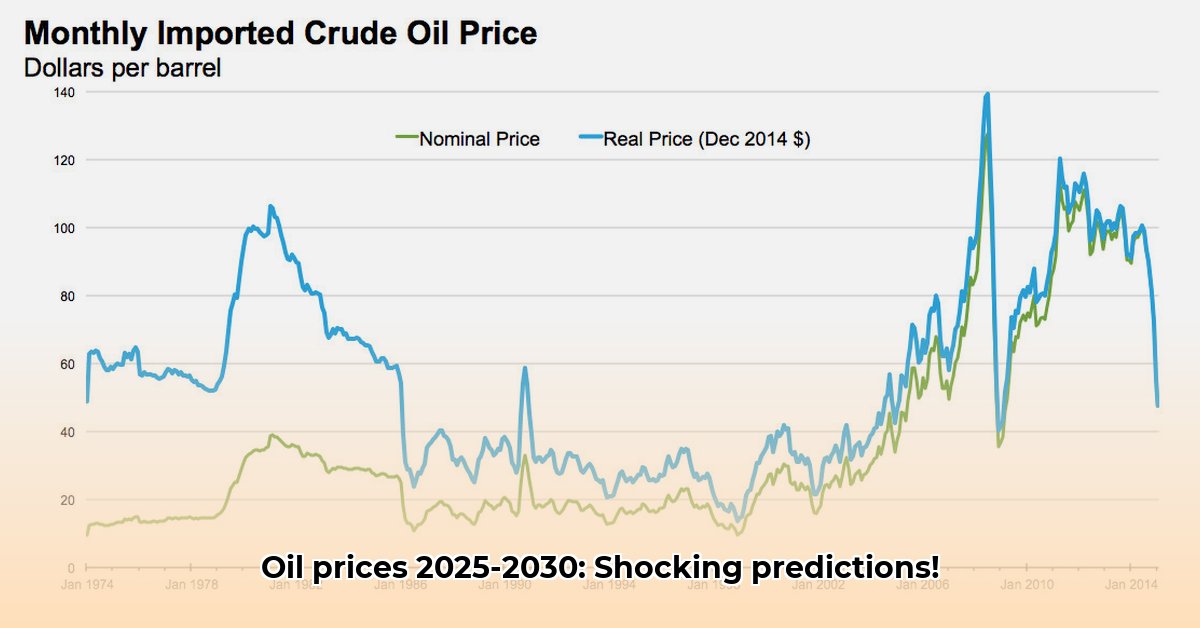
Oil Price Volatility: A Deep Dive into Supply and Demand Dynamics
The global crude oil market is a complex beast, influencing everything from the price at the petrol pump to international geopolitics. Its price volatility stems primarily from an ongoing imbalance between supply and demand, a dynamic shaped by a confluence of factors. Understanding these forces is crucial for navigating the market's inherent uncertainties and predicting potential price trajectories between 2025 and 2030. Isn't it fascinating how seemingly disparate events can converge to dramatically shift oil prices?
Supply Side Influences: A Tightrope Walk
Oil supply is influenced by several factors. Firstly, exploration and discovery of new reserves play a vital role. However, recent exploration efforts haven't kept pace with burgeoning global demand. Secondly, production levels in existing oil fields are subject to various constraints: technological limitations, political instability (think geopolitical risks in major oil-producing regions), and even unexpected weather events. All these factors contribute to fluctuations in oil supply. Have you considered the impact of climate change-related weather events on oil production and subsequent price hikes?
Demand-Side Drivers: A Rising Tide
On the demand side, rapid economic growth, particularly in developing Asian economies, is a significant driver. Industrialization and manufacturing demand vast quantities of crude oil, putting upward pressure on prices. Further, global economic growth, alongside population growth, leads to increased transportation and energy consumption, directly impacting oil demand. How significantly will increased electric vehicle adoption impact oil demand in the forecast period?
Understanding the Price Charts' Wild Swings
The price of oil doesn't move in a straight line; several factors contribute to its volatility:
- Geopolitical Events: Unexpected conflicts or political instability in major oil-producing regions can dramatically disrupt supply chains, leading to sharp price increases.
- Economic Growth: Strong global economic growth translates to increased industrial activity and transportation needs, driving up demand and prices. Conversely, economic downturns can result in reduced demand and lower prices.
- Benchmark Crudes: Brent and West Texas Intermediate (WTI) crude oils serve as global benchmarks. Changes in their prices have a ripple effect across the entire market. WTI, primarily reflecting North American pricing, and Brent, the global benchmark, represent distinct market segments and exhibit different price behaviors.
Stakeholder Analysis: Diverse Impacts of Oil Price Fluctuations
Oil price volatility differentially affects various stakeholders.
- Oil-Producing Nations: Price fluctuations pose considerable economic challenges. Many face pressure to diversify their economies away from over-reliance on oil revenue, while also grappling with the need for investment in sustainable energy solutions. The transition to cleaner energy presents both challenges and opportunities.
- Refinery Companies: Refinery profitability hinges on the intricate dance between crude oil prices and refined product prices. Efficient operations and strategic positioning are crucial for long-term success. How will evolving environmental regulations impact refinery investments and profitability?
- Energy Consumers: Governments and businesses bear the brunt of price volatility. Developing energy security strategies in the face of price fluctuations is paramount. The shift to renewable energy and energy efficiency measures is gaining momentum.
- Investors: Oil investments are inherently risky. Effective risk management strategies are essential to navigate the market’s uncertainties and capitalize on investment opportunities.
Risk Assessment: Navigating the Uncertainties
Several significant risks threaten the stability of the global crude oil market and dictate the necessity of robust mitigation strategies. For instance, geopolitical instability can cause sudden disruptions in supply and lead to significant price spikes, requiring a diversification of sources and geopolitical risk mitigation strategies. Similarly, supply chain disruptions, whether due to natural disasters or man-made events, require robust and flexible supply chain management. Finally, price volatility necessitates strategic hedging strategies to manage risks associated with price fluctuations in the futures market.
Regulatory Landscape: Shaping the Future of Oil
Governments worldwide enact increasingly stringent environmental regulations impacting the oil industry. These regulations encourage a shift towards renewable energy and sustainable practices but can also create uncertainty for oil companies. Understanding the evolving regulatory landscape is crucial for anticipating future trends in supply, demand, and prices.
Conclusion: Charting a Course Through Uncertainty
Predicting the trajectory of oil prices is fraught with uncertainty. However, by analyzing the interplay of supply and demand, assessing related risks, and understanding the regulatory landscape, we can develop a more informed perspective on the potential evolution of oil prices between 2025 and 2030. The future of oil remains dynamic, necessitating a holistic understanding of all its intertwined elements.